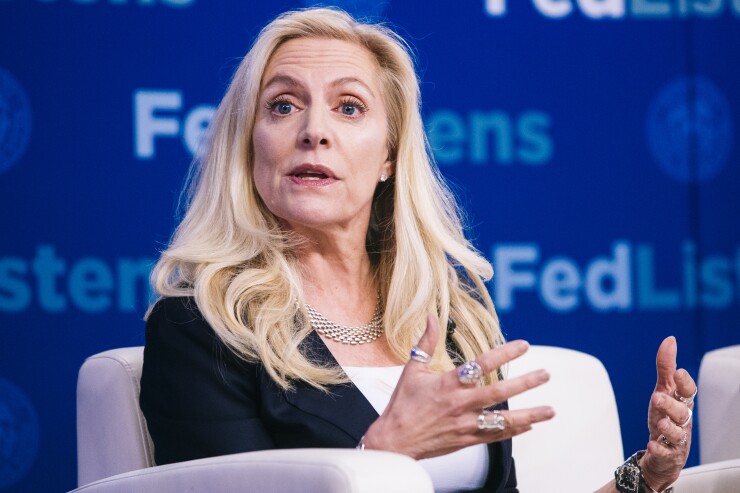As with most things related to 2020, COVID-19 will be a deciding factor as the Federal Reserve considers whether banks are able to increase their dividends or resume share buybacks.
The central bank releases results of its second round of stress tests at the end of the week. It scheduled the review to better understand the potential long-term effects of the pandemic on banks’ finances after coming up with a temporary formula earlier this year to determine its payout policy, which included a suspension of share buybacks. Two banks had to also curtail dividends as a result of those rule changes.
“A lot of uncertainty was introduced during the pandemic, and now we’re in a second wave,” said Monica O’Reilly, who leads the U.S. financial services industry group for Deloitte. “Even as the vaccine arrives, there’s no certainty of the economic repercussions for the next six months. The Fed has to take that into account.”
Even though the central bank has published detailed economic scenarios it will use to test the firms’ financial strength in the second round, many analysts have instead been looking at policymakers’ speeches and other signs to guess whether the restrictions will be eased or kept in place a bit longer when results come out Friday afternoon.

Fed Gov. Lael Brainard has criticized the central bank’s willingness to permit limited dividends, arguing that the crisis is still raging and banks may need that capital before it’s over. That view has been echoed by prominent Democrats on the Senate Banking Committee, including its ranking member, Sen. Sherrod Brown, and Sen. Elizabeth Warren.
On the other side, Randal Quarles, the Fed’s vice chairman for supervision, has praised banks as a “source of strength” to the economy, and said he hopes Friday’s results will let the industry return to “regular order.” The Fed will no longer need temporary payout restrictions “after we emerge from the COVID event,” Quarles said in a speech last week.
JPMorgan Chase and other large U.S. banks have indicated they’re ready to restart buybacks in the first quarter, as soon as the central bank gives the green light.
But Brian Kleinhanzl, an analyst at Keefe, Bruyette & Woods, said it’s a “fool’s errand” trying to predict when that will happen.
“The test just gives them cover to do whatever they want,” Kleinhanzl said in an interview. “COVID isn’t going in the right direction and they still seem worried about the economy, so they might keep the buyback ban for six more months. Or they may allow a few to resume repurchases. Anything is possible.”
Europe's approach
The Fed’s bank-by-bank approach contrasts with European regulators, who instituted blanket bans on capital distributions at the outset of the pandemic.
Now they’re relaxing some of the prohibitions introduced in March. The Bank of England said last week that while banks can resume paying dividends, they will have to be capped at about 25% of quarterly profit, among other rules.
The European Central Bank said Tuesday that it would allow the resumption of dividends with multiple conditions, including that they don’t exceed 15% of a firm’s cumulative profit for 2019 and 2020. Those are similar to the Fed’s current restrictions, which froze dividends at their midyear level, corresponding to about 25% of income for the top six banks. European banks typically distribute profits through dividends while U.S. firms lean more heavily on share buybacks.
The Fed in June also said a bank’s dividends can’t exceed average quarterly earnings for the previous four quarters, which forced Wells Fargo to curtail them because its profits dipped sharply due to the pandemic and other regulatory restrictions. Capital One Financial had to cut its dividend after a surge in loan-loss provisions led to two quarters of losses.
Analysts have pointed to Fed officials’ comments on the economic uncertainty as a sign the central bank is leaning toward keeping the buyback ban in place a little longer.
“Regulators should not allow banks to resume dividend payments until we’re officially in the clear,” said Jeremy Kress, a former Fed lawyer now teaching at the University of Michigan’s Ross School of Business. “Public-health officials are telling us to double down on safety protocols to get through the winter. Financial regulators should have a similar, cautionary outlook.”





